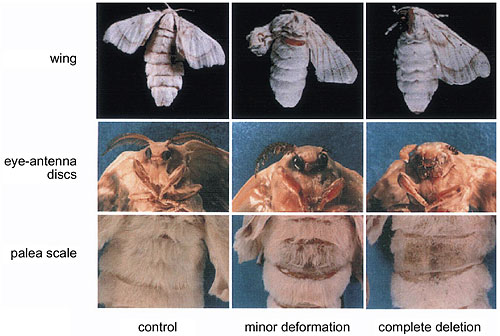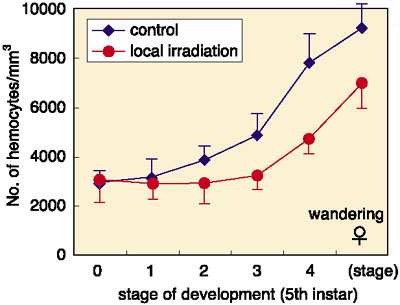To study living organic functions of insects, extraction of each organ and analysis of ensuing changes were customarily performed up to now. However, bleeding during extraction cannot be disregarded and in many cases because of the inaccessible position of the organ, the surgical operation cannot be done. Therefore the validity of radiosurgery technology was investigated, whereby specific organs in a living organism are inactivated through local irradiation with heavy ion beams.
When silkworm larvae were locally irradiated, unlike generally irradiated individuals, there were no significant influences on survival and cocoon quality. Accordingly, for locally irradiated individuals, only localized effects on irradiated parts such as the deletion of a wing, etc., were observed in the adult (Fig. 9-8). In order to further affirm that radiosurgery technology will destroy only specific organ functions in such a living organism, the hemopoietic organs of larvae were locally irradiated. As a result, the increase of hemocyte densities were clearly restrain and the functional disorder of the hemopoietic organ was affirmed (Fig. 9-9). Moreover, a kind of hemolymph protein was discovered when it disappeared after local irradiation of heavy ions. This protein may be related with the function of hemocytes of silkworm and is suggested to be an important clue in clarifying the function of unknown hemocytes. We can see from these results that as an alternative to surgical operation, radiosurgery technology can selectively destroy specific organs and tissue in living organism by means of local irradiation. We conclude that radiosurgery using heavy ion beams for local irradiation can be regarded as an effective research method for studying the growth and development and the functions of various tissues and organs in insects. |


